When Serbian performance artist Marina Abramović (NA 2013) agreed to take part in Matthew Akers’s 2012 documentary Marina Abramović: The Artist is Present, which centers on her monumental 2010 exhibition (of the same name) at the Museum of Modern Art (MoMA) in New York City, she couldn’t have known how powerfully that film—with its themes of human connection and loneliness—would resonate nearly a decade later. The 2020 global pandemic has forced us to distance ourselves from one another; to find ways to stay in touch in a new, please-don’t-touch-me world; and to confront feelings of unease and emotional dislocation as we do so. We’re apart but together is a fitting sentiment for these turbulent times, and that sentiment, which has always lived in Abramović’s work, is strongly articulated in the documentary.
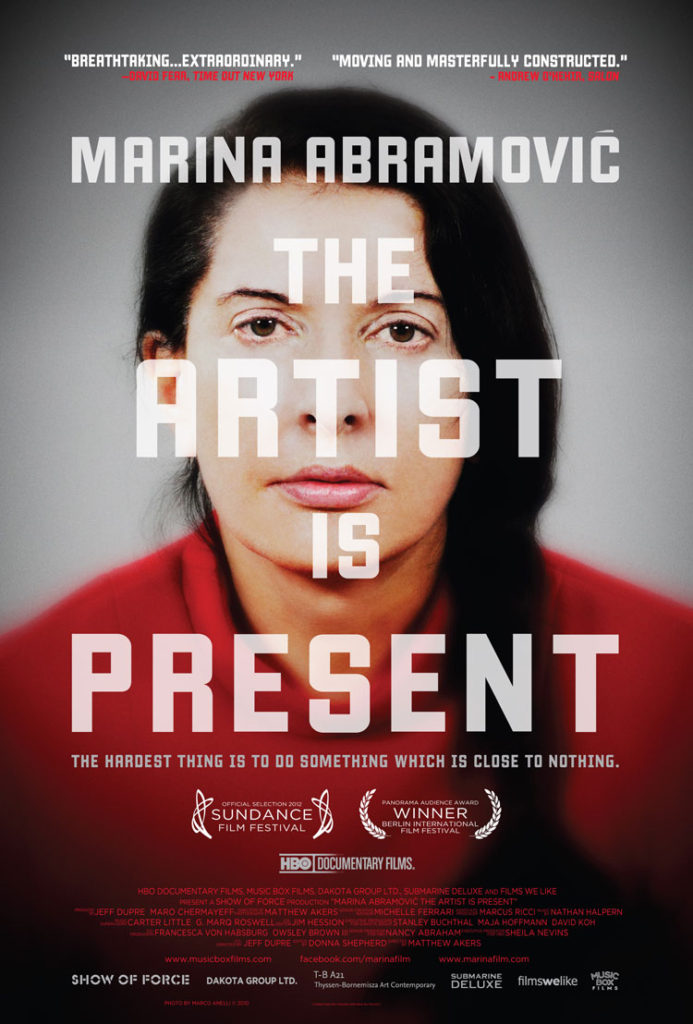
The exhibition at the heart of the film ran from March 14 to May 31 and featured some 50 works spanning Abramović’s 40-year career. It included a number of classic performance art pieces—first performed decades ago by Abramović, or by Abramović and fellow artist Ulay (Frank Uwe Laysiepen)—that were recreated (or “re-performed,” as Abramović puts it) at MoMA by a collection of young artists that she selected for the show. These “re-performed” pieces (many staged in the nude) include Imponderabilia, 1977, in which two people stand inches apart in a narrow entryway as museum patrons squeeze through the space between them; Luminosity, 1997, featuring a woman sitting on a bicycle seat that isn’t attached to a bicycle; Relation in Time, 1977, in which a man and a woman stand back to back for hours with their ponytails tied together; Point of Contact, 1980, featuring two people, standing close together, who point their index fingers at each other but try not to touch; and Nude with Skeleton, 2002–2005, a comment on mortality in which a person lays motionless with a skeleton placed over their body.
Of these five pieces, Imponderabilia and Point of Contact have particular relevance today. Imponderabilia, with its focus on an individual aggressively encroaching on others’ personal spaces, now feels especially threatening. It brings up the kind of anxiety one might experience when trying to navigate a packed bus or train (imagining such a scenario today can be terrifying). Meanwhile, Point of Contact, a poetic illustration of social distancing if ever there was one, could make for a decent instructional poster in a doctor’s office in 2020. The piece casts a pair of bodies as magnets that are drawn to each another in spite of some invisible barrier that keeps them apart. Sound familiar?
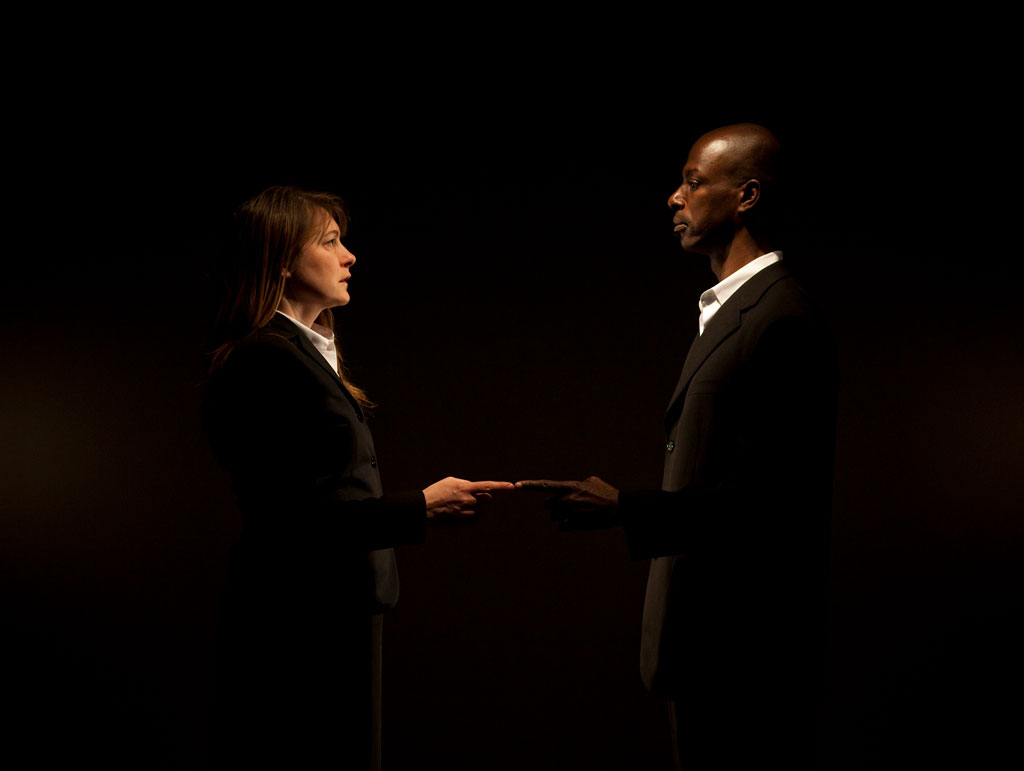
The human body, with its myriad strengths and vulnerabilities, has proven endlessly fascinating to Abramović, who was raised in the former Yugoslavia by parents who, she says, didn’t give her much affection. As an artist, Abramović uses her body as a tool of expression and often pushes it to its limit. Nowhere is this more profoundly dramatized than in her MoMA exhibition. The linchpin of that show—and the showstopper of Akers’s documentary—is a demanding performance piece that Abramović pulls off with the assistance of museum visitors, most of them strangers, over the course of the exhibition’s three-month run. The setup is simple. Abramović sits in a chair across from an empty chair. There’s a small table between the chairs. Museum visitors are invited to sit across from her and gaze into her eyes. That’s it. No talking. No touching. Just staring.
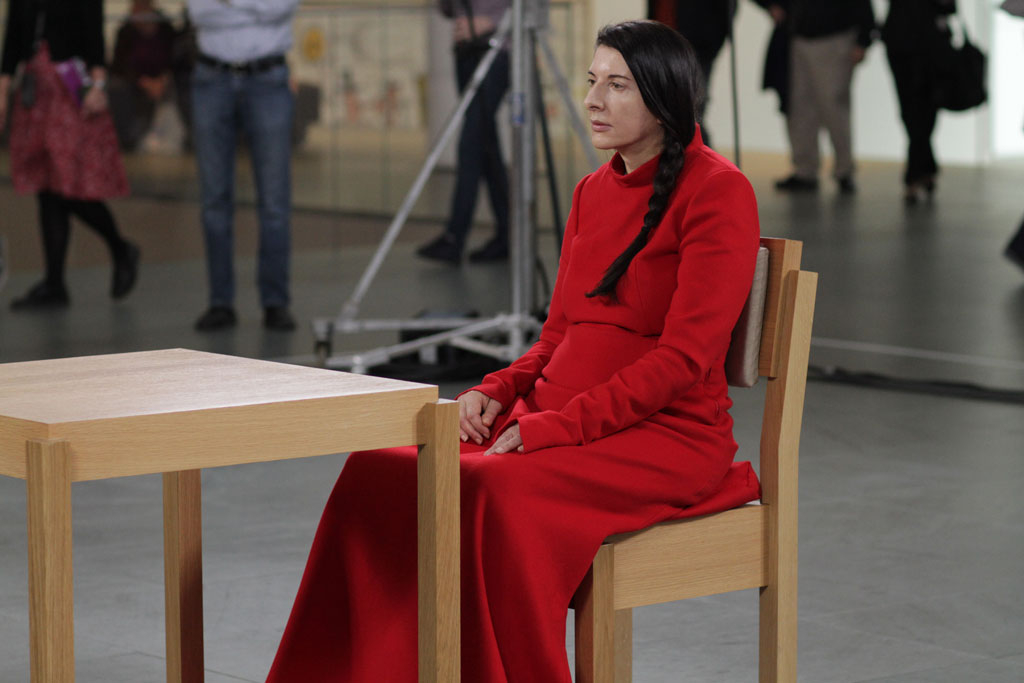
Will anyone participate in this? That’s what Abramović’s team anxiously asks as opening day approaches. (New York was bustling then; people had places to go.) Well, people do participate—and more come every day. Looking at the footage, one is taken by the volume of bodies indiscriminately bumping into one another in a carefree manner as they enter the museum. (Those were the days!) It’s a sea of movement, unhampered, entering an institution that, in 2020, has been forced to shut out the very people it was built to unite. Abramović’s piece, performed in the museum’s atrium, quickly turns into an operatic staring contest as she mutely engages with one visitor after the other and casts a beam of energy their way. Some visitors sit across from her for only a moment, while others sit for hours; as long as the museum is open, there’s no time limit for sitters. When an individual gets up, the artist lowers her head and takes a rest (she’s like a computer rebooting itself), and when the next person arrives, she lifts her head again in warm greeting. She ultimately sits in her chair for over 700 hours, opposite some 1,000 visitors, including Ulay, her former partner and lover, and the exhibition’s curator, Klaus Biesenbach.
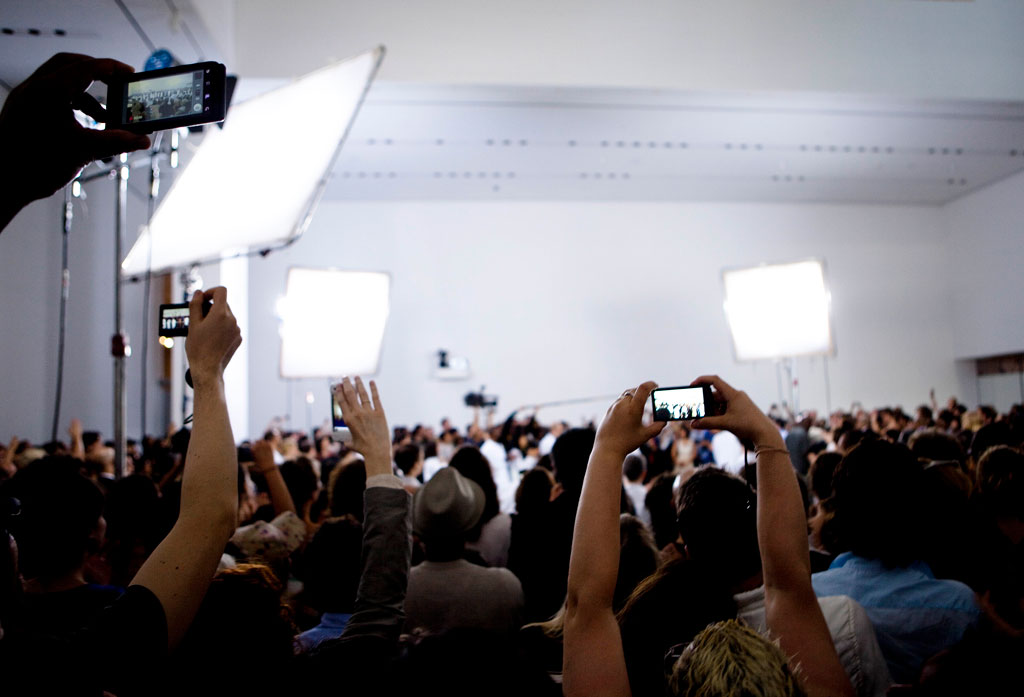
Akers does a fine job of capturing the magic of the event—but also the frenzy. The longer the show runs, the bigger the crowds get. Pretty soon, people are lining up at the museum doors before the place opens, and many are camping out overnight. Some cry as they sit across from Abramović. She cries too. In the last month of the exhibition, the table between the two chairs is removed, per Abramović’s direction, and the intimacy between artist and sitter is heightened as the only physical barrier between them gets erased. (Though, interesting, the chairs remain fixed a few feet apart.) “There’s so many different reasons why people come to sit in front of me,” Abramović says in the documentary. “Some of them are angry, some of them are curious… So many people have so much pain… Very soon, I’m just a mirror of their own self.”
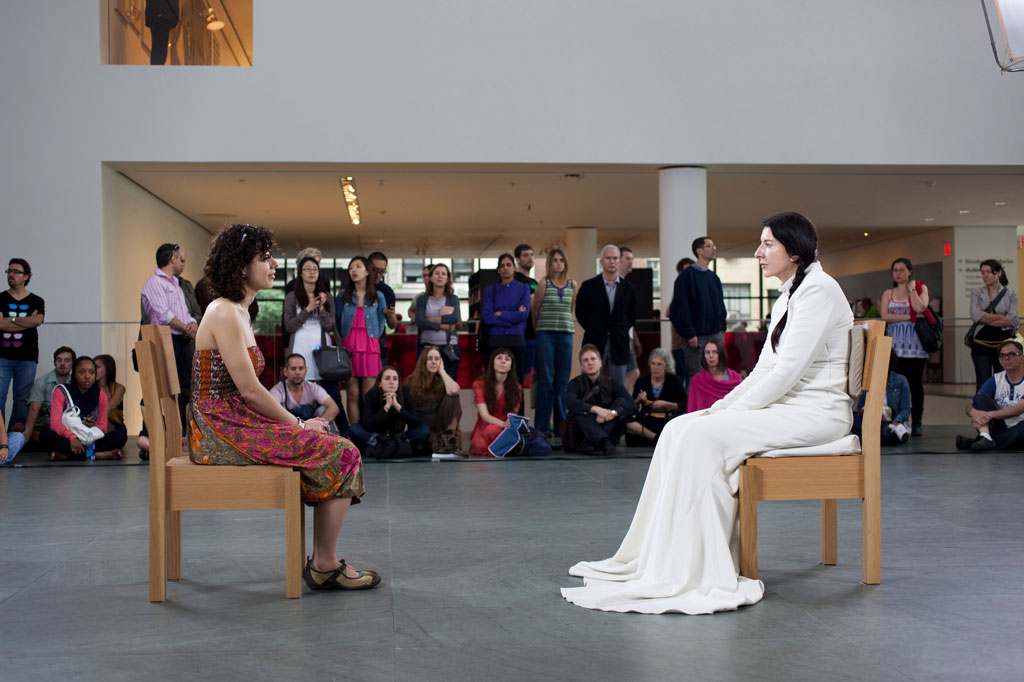
In The Artist is Present, Abramović invites viewers to take a break and slow down. The intimate space she created through stillness was healing and transformative for many who entered it. To eliminate outside distractions and engage in reflection is an act of self-nurturing, the artist suggests. That is wisdom we can all apply in the social distancing age. Abramović reminds us of how deeply we long to be seen and acknowledged and, in the process, opens us up to the beauty of making meaningful connections without the use of any physical touch.
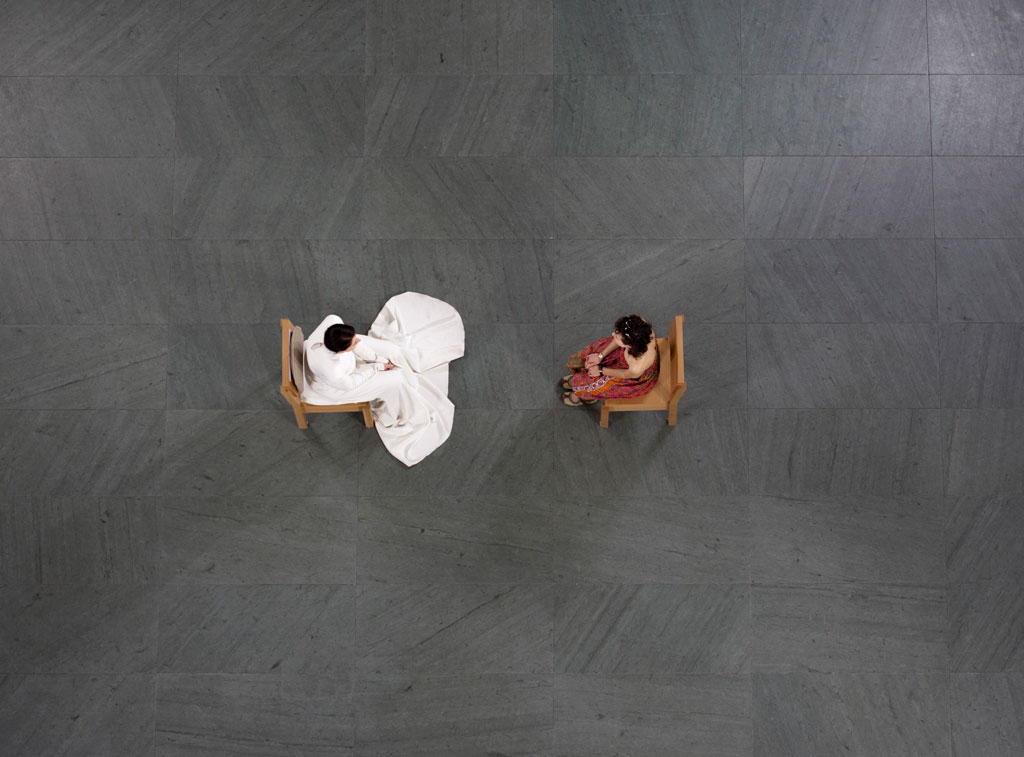
Marina Abramović: The Artist is Present is available on streaming services.
Elaine Szewczyk was born in Kraków, Poland. She is a culture writer, an editor, a TV and film script reader, and a novelist. Her novel, I’m with Stupid, was optioned by ABC Studios. Follow her at instagram.com/elaineszewczyk.
